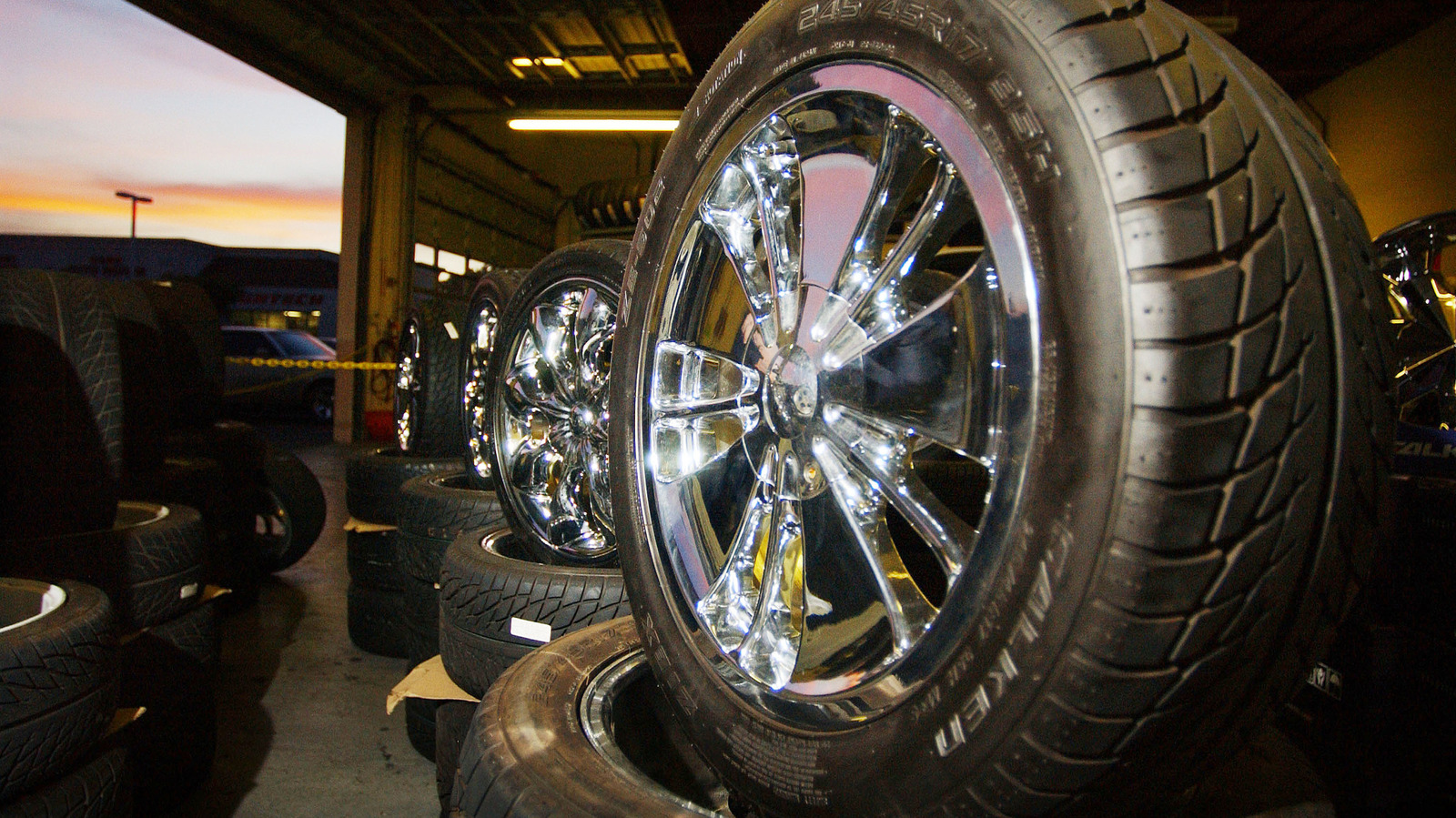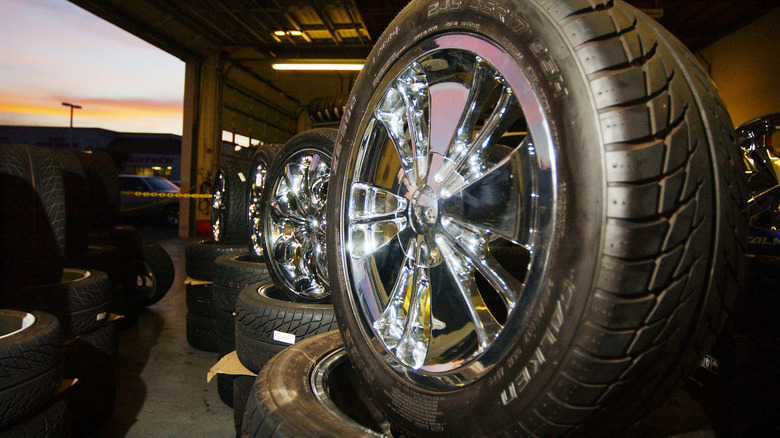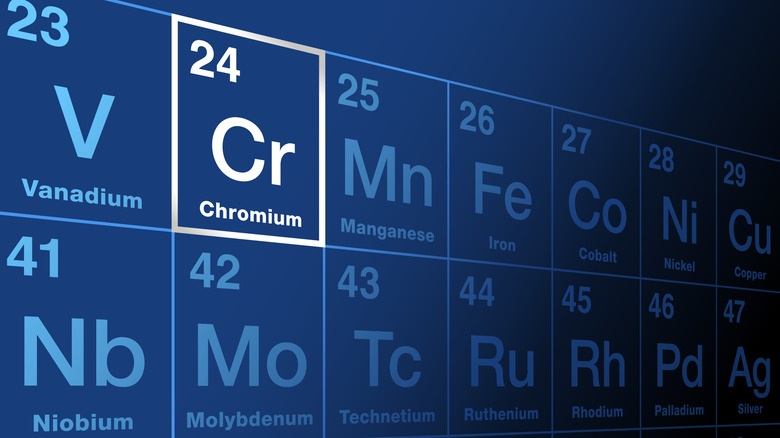Chromium is a hard and silvery metal that has historically been used as a decorative and protective element for automotive wheels and trim. Given that Chromium is the hardest metal on the periodic table, and can be electroplated to the surface of steel or aluminum wheels then polished to a mirror-like finish, it makes the perfect durable coating. Unfortunately, chrome is reactive to salt and the chemicals in brake dust, which can eat away at the finish, causing dulling and pitting. Chrome plating can also act as a cover for road salt and moisture to get under and eat away the structure of the wheel underneath, which will eventually see the upper layer of chrome flake away leaving gross aluminum or rusty steel behind.
My first recommendation is to throw your chrome wheels in the trash, because they don’t look good and never have. But if you’re committed to keeping your chrome, there are a few steps you can take to prolong the finish. So how do you protect your wheels from pitting, and keep them looking as shiny as possible? Let’s dig into the nitty gritty.
How are wheels chromed?
Where chrome wheels were once a staple of the automotive community, they’re less frequently employed in the modern era as costs have significantly risen due to more strict regulation of chrome plating. Chromium, it turns out, is highly carcinogenic, and the chemicals used in the process of electroplating are extremely toxic. The use and disposal of chrome plating has become difficult and expensive, so it has largely fallen out of favor.
The process of chroming begins as all good processes do, by preparing and smoothing, then cleaning the surface you want to chrome to remove dirt and impurities that can affect the chrome finish. The surface is then dipped in a cleaning solvent to remove any organic contaminants, like the oils left behind by your fingers. The surface is then electroetched and immersed in a hot chrome plating bath. The longer the metal surface is left in the plating bath with a charge applied, the thicker the chrome plate will become, typically at a rate of about 0.001 inch per hour. Once finished, the surface is rinsed off and polished to a high sheen.
There are many variations on the chroming process, but this gives you an idea of the intensity of the labor and chemicals involved when chrome is applied.
What causes chrome to pit?
Pitting and rusting happens when the surface of the chrome plating is scratched or fractured, often by curbing a wheel. It can show up as bubbling in the chrome, a loss of surface sheen, or even small dimples in the surface of the metal you can feel. This is typically indicative of a larger corrosion problem beneath the surface of the chrome. It may be possible to remove pitting by sanding the surface down flush again, but it will never go away once it’s taken a set, and deeper pitting is impossible to repair without completely stripping and refinishing the wheel. Think of it like a rock chip in your car’s paint. The paint isn’t ever coming back, the best you can do is fill it or re-paint it altogether.
The best way to keep your chrome looking good is to prevent pitting from ever happening in the first place. This involves regularly cleaning your wheels of brake dust, road grime, salt, and even rainwater, as any of them can eat away the protective layers. When picking a wheel cleaner, avoid something with harsh acids and agents. It should go without saying, but don’t curb your wheels. If you scrape your wheels on the curb while parallel parking, you’re totally screwed — the chrome is never going to recover to look good again. If you can keep your wheels structurally intact and the chrome undisturbed, you have a much better chance of avoiding pitting. Every once in a while, when you wash your car, polish the chrome with a nice metal polish to keep it looking shiny and devoid of surface imperfections.
My wheels are already pitted, what can I do?
If you have some pitted chrome wheels and you either can’t afford to get them refinished or you want to keep them as original as possible, there are still a few things you can do to mitigate the visual effects of pitted chrome. If the surface under the chrome is steel, you’ll likely see a lot of rusting, which can certainly be cleaned up and look reasonably shiny again, but never like new. If what’s underneath is aluminum, you’re going to want to tread lightly and act carefully.
The first step to any pitting repair is to clean the surface well with a good wheel cleaner, then a nice soft cloth with your choice of soap. Using your fingernail you can find the worst of the pitting, which can be buffed out with extremely fine steel wool. If the pitting is extremely light you can substitute aluminum foil for the steel wool. If the pitting is bad enough to catch your fingernail, start with wet sandpaper before moving to the steel wool. Run the steel wool or sandpaper in a gentle circular motion over the pitted area until you can’t see the pitting anymore. It’s possible you’ll have worn through the chrome at that point, and the wheel will need to be refinished again regardless of your work.
Once the pitting is removed from the chrome you can wash and polish the wheel again before spraying it with a fresh UV and rust protectant clearcoat. Hopefully this process works for you!




